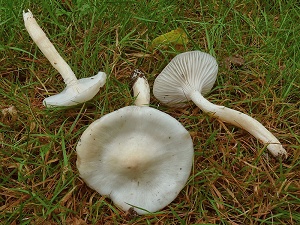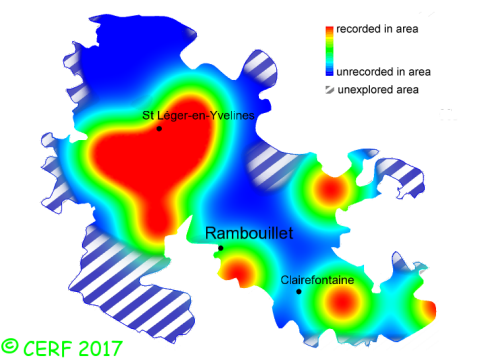| Hygrophorus eburneus (Bull.:Fr.) Fr. |
|
|
|
|
|
|
The cap is white, with a more creamy centre. The cap surface is smooth, viscid or sticky. The stem is white, without ring. The flesh is pale yellow, unchanging; its taste is mild; the odour is faint, of mould, celery or Jerusalem artichoke; its texture is fibrous. The gills are white, decurrent, distant (nb of gills per 90° ~ 14 ). The spore print is white. This species is mycorrhizal. It grows on the ground, in broad-leaved woods, on a rather calcareous or neutral soil, most of the time with beech, but also with oak and other deciduous trees. The fruiting period takes place from July to December.
Chemical tests : orange to ochraceous reaction to potash on stem base, negative elsewhere. Distinctive features : entirely white; very slimy cap and stem; decurrent and distant gills; odour of glue or tangerine Hygrophorus eburneus is quite rare and scattered in the forest of Rambouillet, and is occasional, more generally speaking . | ||
|
page updated on 14/01/18

